The last post talked about the stripped spark plug threads. Well, today I got the Time-Sert repair kit in the mail so it was time to see whether the repair would work.
The Time-Sert repair starts with a thread tap that has an initial part that is the size of the spark plug thread and then steps up to the larger thread for the inserts. The start thread makes it possible to start the tap in the old threads and thus get it aligned properly. This works great, assuming there’s anything left of the old threads, of course.
After cutting the thread for the insert, you leave the tap in place and slide a seat cutter onto the tap, which then guarantees that the seats for both the insert and the spark plug itself are aligned with the new thread. Quite nifty.
Of course, in my case several of the holes had these crappy repairs that needed to get ripped out, so in several holes the start thread didn’t even engage. The threads looked quite awful, in fact:
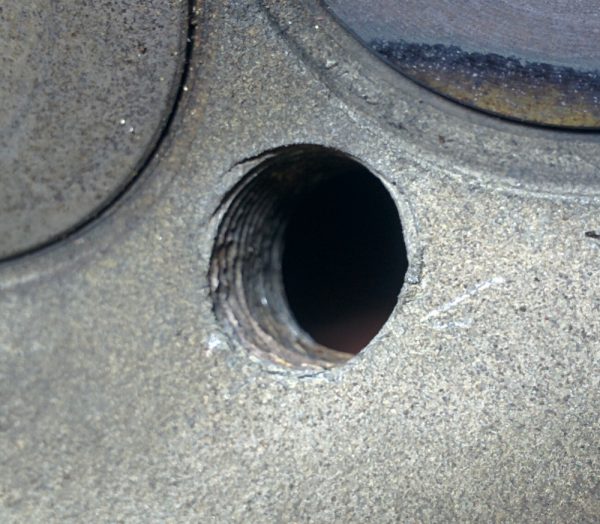
One of the old spark plug threads, clearly in distress. I think this was the thread that had the “half insert” chunk shown in the last post.
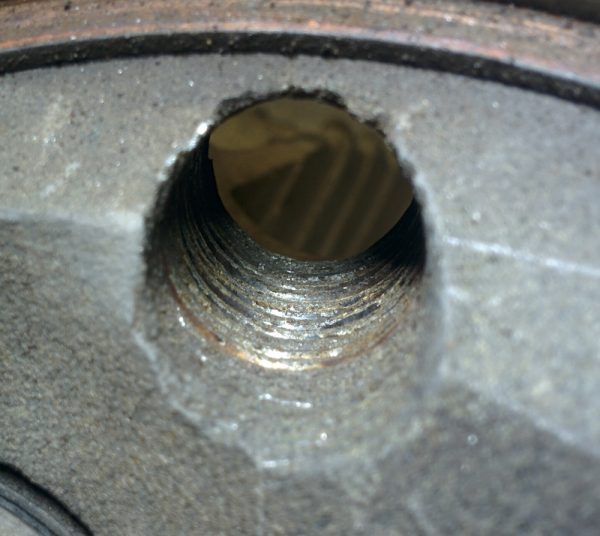
And the third sketchy thread that had a helicoil. This one was in decent shape but the seat was so bad that I decided to go ahead and rip it out anyway. This hole is one of the “extra” spark plug holes that are machined into the heads for aircraft use. Those holes come in at quite an angle.
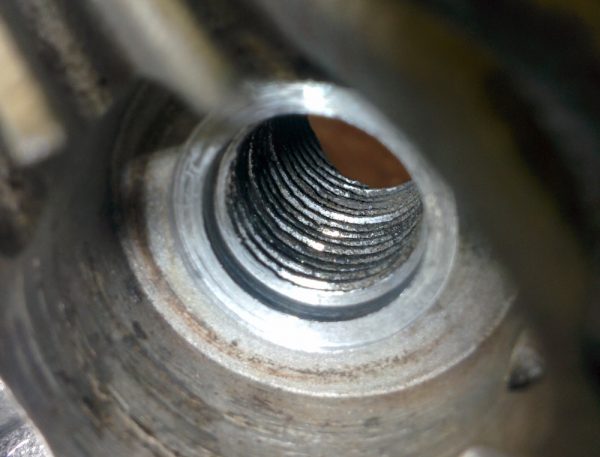
The previous spark plug hole after cutting the insert threads and seat. The insert threads clearly have not been completely cut, but the helicoil and the insert have the same pitch, so the insert actually locks in place securely. Note the freshly cut seat for the spark plug washer, which is quite a bit misaligned from the casting surface.
After cutting the insert threads, you screw the insert in place. The bottom of the insert has threads that are not fully formed, and the insert driver is a thread-forming tap that, as the insert bottoms out against its seat, will expand it and lock it in place.
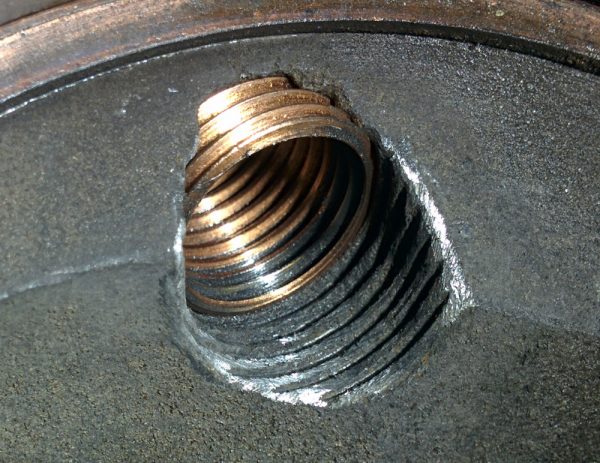
The insert in place. I also rounded off the sharp edges of the hole with a grindstone. The sparkplug threads are just a little bit longer than the insert, so it actually sits pretty shrouded into the hole. Maybe that’s why the engine seems to always run worse on these spark plugs than on the ones in the standard holes?
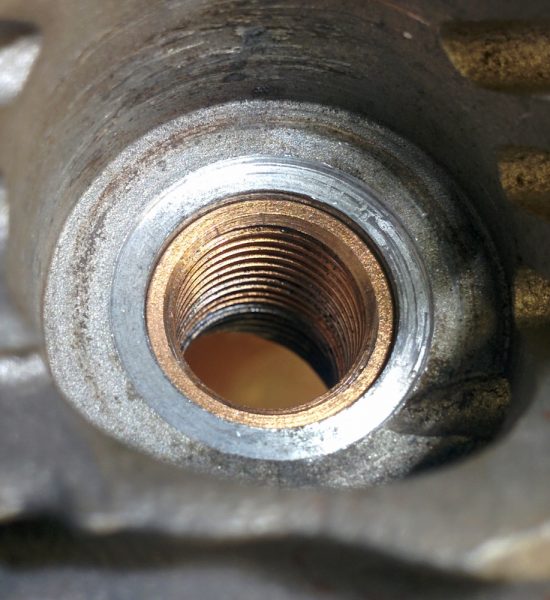
Nice, new seat and insert in place. From the different depth of the seat cut around the hole it’s apparent the old, cast surface was not very perpendicular to the hole.
So that actually seems to work. I have a few holes where I haven’t decided whether I should rip the helicoils out yet, but when I sent some pictures of the repairs, one of the other Sonex owners here pointed out that it looked like there was a crack between the valve seats.
I did a little grinding to see whether it was just a surface feature. Nope, it looks like a crack. And actually three cylinders seem to have cracks in that area.
They certainly don’t seem to be just surface features, but they also don’t seem to go all the way through to the exhaust and intake ports. I’m not sure what the implications of these cracks are. Cylinder head cracks are bad on standard aircraft engines because the entire head is screwed onto the cylinder and is in tension. This means that a crack in the cylinder head can propagate all the way around and make the entire head fall off.
On the Aerovee (and on most non-aircraft engines I’ve seen) the studs go through the entire head and hold the head in compression, which means it can’t just crack completely through and fall off the way a Lycoming/Continental head can (and frequently do). I’m not sure what the worst case scenario is, but it seems that a serious crack would be noticeable as bad compression long before it becomes a safety issue. I’ve asked Sonex what their opinion is, but hopefully we won’t have to buy new heads just yet.
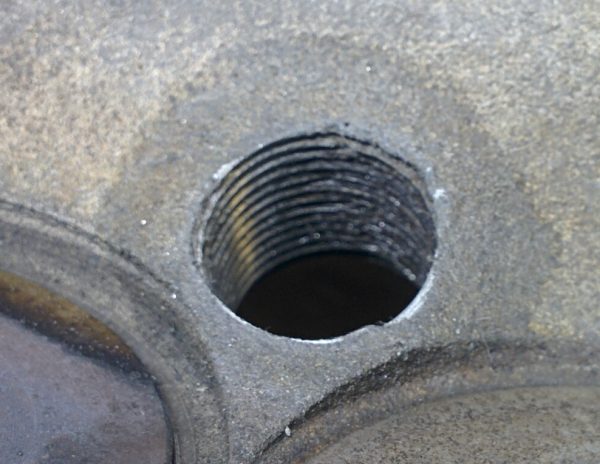
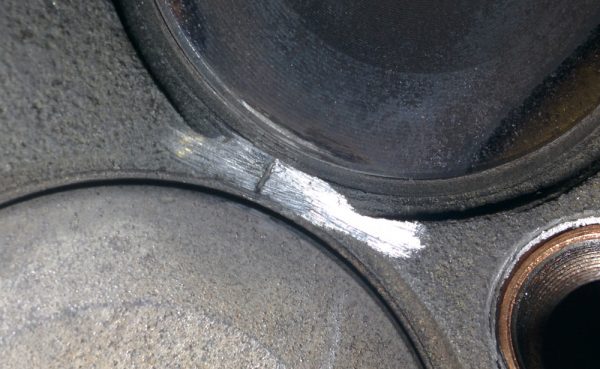
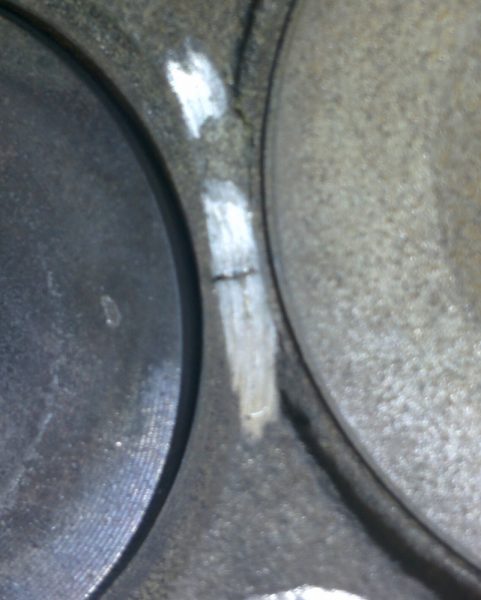
Pingback: More engine problems – Patrik's projects
Pingback: Engine guts 6: More head work – Patrik's projects